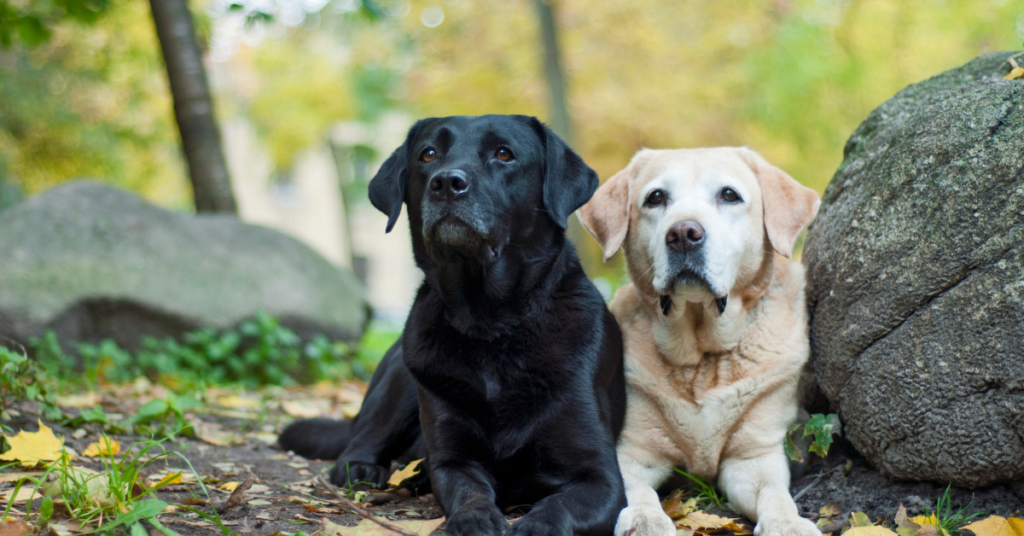The Labrador Retriever is one of the most popular and beloved dog breeds in the world. Known for their friendly and outgoing nature, Labrador Retrievers are versatile dogs that excel in various roles, including service, therapy, hunting, and companionship.
*Disclaimer: This Post May Contain Affiliate Links. This Means That I Receive A Small Commission At No Extra Cost To You Should You Click Through And Make A Purchase. Learn More On My Policy Page
Breed Characteristics
- Breed Category: Sporting Group
- Size: Medium to large
- Coat Length: Short and dense
- Shedding: Moderate to heavy
- Hypoallergenic: No
- Grooming Requirements: Low to moderate; regular brushing needed
- Life Span: 10-12 years
- Activity Level: High
- Temperament/Personality: Friendly, outgoing, affectionate
- Intelligence: High
- Trainability: Very high; eager to please
- Space Requirement: Medium; suitable for homes with yards
- Compatibility with Children & Other Pets: Excellent
- Health Issues: Prone to hip dysplasia, elbow dysplasia, and obesity
- Nutrition Needs: High-quality diet with balanced nutrients

Origin and History
The Labrador Retriever originated in Newfoundland, Canada, where they were initially used by fishermen to retrieve nets and fish from the cold waters. The breed was later brought to England, where it was further developed as a hunting dog. The Labrador’s excellent retrieving ability, combined with its friendly and trainable nature, quickly made it a favorite among hunters and families alike. Today, Labradors are not only popular as pets but also as service dogs, search and rescue dogs, and in various other roles where their intelligence and versatility shine.
Appearance and Physical Characteristics
Labrador Retrievers are medium to large-sized dogs with a sturdy and athletic build. Males typically weigh between 65 to 80 pounds, while females weigh between 55 to 70 pounds. They stand about 21.5 to 24.5 inches tall at the shoulder. The breed’s coat is short, dense, and water-resistant, with colors ranging from black, yellow, to chocolate. Labradors have a broad head, expressive eyes, and a distinctive “otter” tail that is thick and strong, aiding in their swimming ability.
Temperament and Personality
Labradors are known for their friendly, outgoing, and affectionate nature. They are highly social dogs that thrive on human interaction and are known to be great with children and other pets. The breed is often described as having a “soft mouth,” meaning they can carry objects gently without damaging them, a trait that is highly valued in retrievers. Labradors are loyal and loving companions, making them an excellent choice for families, singles, and seniors alike. They are generally not aggressive and are more likely to greet strangers with a wagging tail than with suspicion.

Intelligence and Trainability
Labrador Retrievers are highly intelligent and among the easiest breeds to train. They are eager to please and respond well to positive reinforcement techniques. This combination of intelligence and trainability makes them ideal for a wide range of activities, including obedience training, agility, hunting, and service work. Labradors excel in tasks that require problem-solving and quick learning, making them one of the most versatile breeds. Consistent training from a young age is important to harness their energy and intelligence effectively.
Compatibility with Children and Other Pets
Labrador Retrievers are known for their excellent compatibility with children and other pets. Their gentle and patient nature makes them a good choice for families with young children. Labradors are also typically friendly and sociable with other dogs and pets, especially when properly socialized from a young age. Their playful and affectionate personality makes them a favorite among both children and adults, and they are known to form strong bonds with all members of the family.
Health and Nutrition
Labrador Retrievers are generally a healthy breed, but they can be prone to certain health issues, including hip dysplasia, elbow dysplasia, and obesity. Regular veterinary check-ups, a balanced diet, and proper exercise are essential to maintaining their health. Labradors are known for their love of food, so it’s important to monitor their diet closely to prevent overeating and obesity. Providing a high-quality diet that supports their medium to large size and high activity level is important.

Exercise and Activity Level
Labradors have high energy levels and require regular exercise to stay healthy and happy. They enjoy activities such as running, playing fetch, swimming, and participating in dog sports like agility and obedience. The breed thrives in homes with ample space for physical activities, but they can also adapt to apartment living if they receive sufficient exercise and mental stimulation. Labradors benefit from daily walks, playtime, and opportunities to engage in mentally stimulating activities.
Grooming Needs
The grooming needs of Labrador Retrievers are relatively low, but regular brushing is necessary to manage shedding and keep their coat healthy. Labradors have a dense, water-resistant coat that sheds throughout the year, with more intense shedding during seasonal changes. Bathing should be done as needed, and routine grooming tasks such as dental care, ear cleaning, and nail trimming are important to prevent common health issues. Labradors’ coats are easy to maintain, making them a low-maintenance breed in terms of grooming.
Training and Socialization
Early training and socialization are crucial for Labrador Retrievers. Due to their intelligence and energy, it’s important to establish good behavior and obedience from a young age. Positive reinforcement techniques work best, as harsh training methods can be counterproductive. Socialization with other dogs, people, and different environments helps them develop into well-rounded and confident adults. Labradors are also known for their sensitivity, so a gentle and patient approach to training is recommended.

Famous Labrador Retrievers
Labradors have gained widespread popularity as both service dogs and family pets. Their friendly nature and adaptability have made them a favorite among celebrities and dog enthusiasts alike. The breed has appeared in various media, including movies, television shows, and advertisements, often portrayed as the ideal family dog. Labradors’ versatility and charming personality have earned them a special place in the hearts of dog lovers around the world.
Conclusion
The Labrador Retriever is a friendly, energetic, and intelligent breed that makes an excellent companion for families and individuals alike. With proper training, socialization, and care, a Labrador can be a loyal and devoted member of the family.














